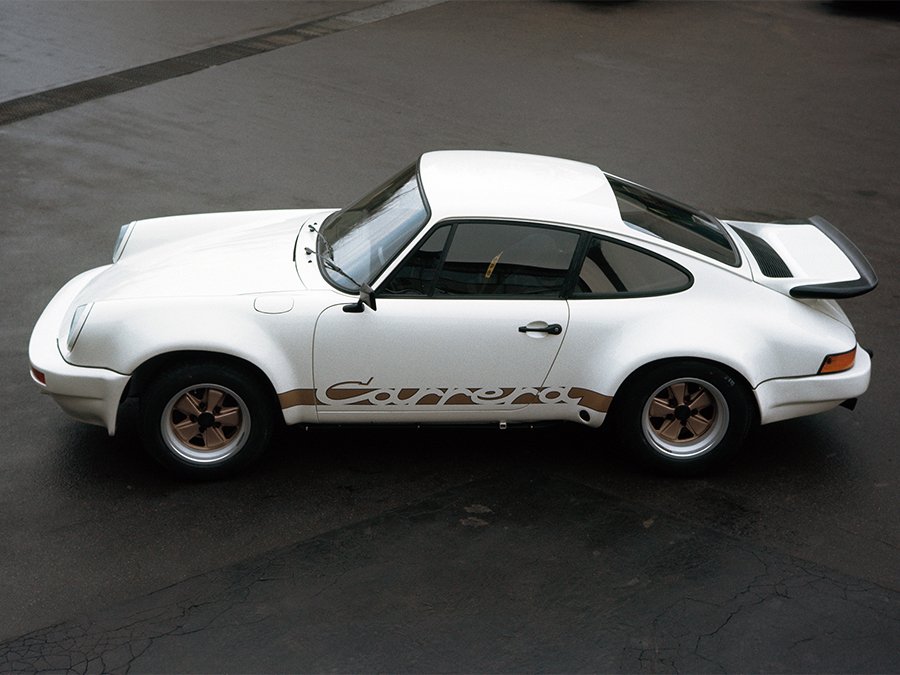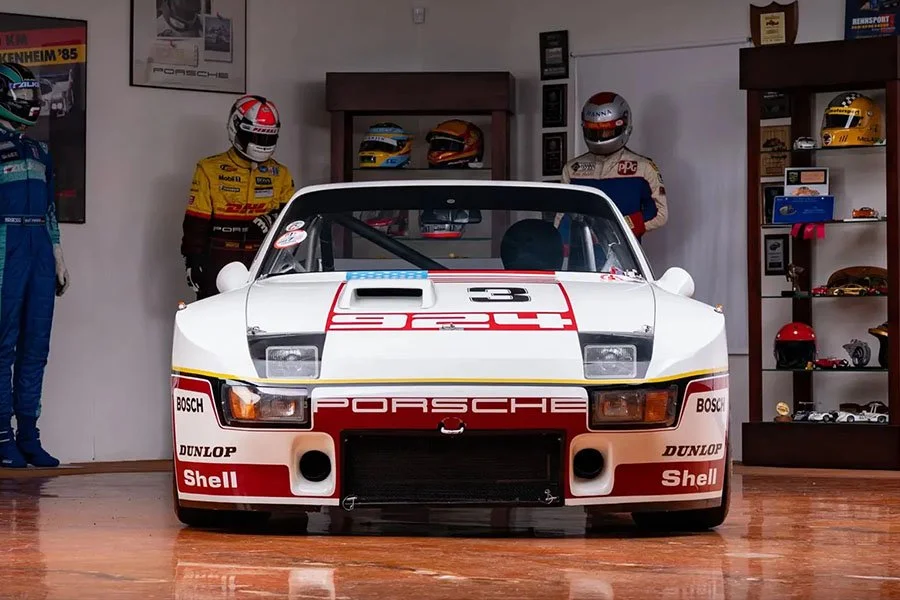Guide: Porsche 911 3.0 Carrera RS - a Historical & Technical Appraisal
/BACKGROUND
When Porsche created the hardcore 911 2.7 Carrera RS for the 1973 model year, many of the company’s senior managers were not convinced it would be easy to sell the 500 cars needed to qualify for Group 4 GT racing.
However, as it transpired the firm was inundated with orders from the moment the new car broke cover at the Paris Motor Show in October 1972.
Ultimately, demand proved sufficient that over 1500 examples of the high performance driver-focused model were sold within a matter of months.
Porsche’s decision to create the 2.7 Carrera RS was part of a wider move away from Prototype racing in favour of production-based Grand Touring machinery that more closely resembled the kind of vehicles customers could find at their local main dealer.
During the course of 1973, the Group 4 racing version of the 2.7 Carrera RS (the 2.8 Carrera RSR) became the dominant car in its class and routinely vanquished much bigger engined machinery from Ferrari, De Tomaso and Chevrolet. Like the RS, the RSR also proved a commercial hit and 49 were sold to customer teams and privateers.
Not willing to rest on their laurels, Porsche subsequently decided to build a pair of even more extreme 911s in anticipation of the 1974 season.
At the time, the FIA’s Evolution rule permitted manufacturers to create a further uprated version of the already homologated base car so long as a minimum of 50 units were completed. The Evolution base car could in turn then be used as the starting point for an even more radical competition version.
With this in mind, Porsche produced the legendary 911 3.0 Carrera RS which went on to spawn another utterly dominant RSR version.
The first 3.0 Carrera RS was completed in October 1973 and the FIA homologated the model on April 1st 1974 following the completion of 50 units.
Despite having been priced at nearly twice as much as the outgoing 2.7-litre version, Porsche had no trouble selling their latest Renn Sport 911 and 56 were eventually completed.
In addition to an array of performance upgrades, the 911 3.0 Carrera RS was most notably based on the significantly revised 1974 model year G-body platform with its impact-absorbing bumpers.
CHASSIS
Each 3.0 Carrera RS started life as a standard unitary steel 911 bodyshell without any rustproofing or sound deadening.
Suspension was fully independent with torsion bars and telescopic shocks. The front end used a compact MacPherson strut arrangement with a single lower wishbone while semi-trailing arms were installed at the rear. Gas-filled Bilstein dampers were fitted all round.
3.0 Carrera RS-specific equipment included RSR-style revised inner pivot points for the rear suspension, reinforced rear trailing arms with solid bushes and thicker adjustable anti-roll bars (19mm front and 26mm rear).
The brake system was uprated over the outgoing 2.7 with 917 / RSR-style cross drilled and ventilated 300mm discs and finned four-piston calipers.
Forged 15-inch diameter Fuch alloy wheels measured 8 and 9-inches wide front-to-rear respectively. They were originally shod with 215/60 and 235/60 VR 15 Pirelli CN 36 tyres. Compared to the 2.7 RS, track was 65mm wider up front and 58mm wider at the back.
An 80-litre fuel tank was housed underneath the front lid.
ENGINE / TRANSMISSION
In the engine bay was a dry-sumped Type 911/77 Flat 6 motor with cast-iron block and light alloy single overhead cam heads running two valves per cylinder.
Compared to the outgoing 2.7 RS, each cylinder bore was enlarged from 90mm to 95mm. Capacity went from 2687cc to 2993cc as a result (a gain of 306cc). Stroke travel was kept at 70.4mm which ensured the new engine was no less responsive than before.
Because the enlarged cylinder bores would not have left enough magnesium to safely run with circa 330bhp in RSR trim, Porsche elected to fit a stronger die-cast aluminium crankcase. Aluminium cylinders were Nikasil-plated.
Additional cooling came by way of a large engine oil radiator mounted under the front bumper.
Four-bearing camshafts from the new RSR were installed.
Mechanical fuel-injection was courtesy of the same Bosch K-Jetronic system used by the outgoing 2.7 RS.
With a compression ratio of 9.8:1 Porsche claimed peak output figures of 230bhp at 6200rpm and 203lb-ft at 5000rpm.
For comparison, the 2.7 RS had pumped out 210bhp at 6300rpm and 188lb-ft at 5100rpm.
Transmission was through a five-speed 915 gearbox, single-plate clutch and limited-slip differential with 80% locking factory. As per the RSR, a transmission oil cooler was installed complete with integrated pump built into the gearbox end cover.
BODYWORK
In order to comply with ever-tightening safety legislation emanating from the USA, Porsche added impact-absorbing bumpers to the 1974 model year 911 which was easily the new variant’s most distinctive feature.
While an undoubtedly far more elegant solution than the enormous appendages adopted by most high performance manufacturers of the time, the 911’s new bumpers added a significant amount of weight.
Because the 3.0 Carrera RS was not going to be offered in the United States, Porsche made the decision to ditch the G-body impact bumper assemblies in favour of flimsy lightweight single-piece items fashioned from fibreglass.
The redesigned front bumper housed a large rectangular intake for the engine oil cooler flanked by circular brake ducts on either side. The back bumper was adorned only with illumination lights for the licence plate and a pair of small rectangular reflectors slung out underneath.
Fibreglass was also used instead of steel for the front and rear lids, the latter of which came with a new ‘Tea Tray’ spoiler complete with integrated cooling grille and black thermoplastic shroud for the sides and trailing edge.
To save even more weight, thinner gauge steel was used for the doors, the sill covers were left off and ultra thin Glaverbel safety glass was installed at the sides and rear of the car.
Dramatically flared steel fenders were necessary, partly to cover the new wheels but also to enable the RSR version to run massively widened rims (Group 4 regulations dictated the competition version could be up to two-inches wider than the homologated base car).
Instead of chrome, a modern satin black finish was used for the window frames, door handles, exterior mirror and windscreen wipers.
‘Porsche’, ‘Carrera’ and ‘RS’ decals colour matched to the wheel centres were normally adhered to the front lid / bumper, down each flank and on the engine cover respectively.
INTERIOR
In a similar fashion to the M471 Sport-optioned 2.7 Carrera RS, the new three-litre 911 Renn Sport came with fabric Recaro bucket seats, thin felt carpet, rubber floor mats, basic door trim, manual window winders and a simple black headliner.
The rear seats, clock, glovebox door and even the passenger sun visor were deleted. No audio system was originally fitted.
Behind the new-for-1974 three-spoke steering wheel were dials for road and engine speed inboard of which were combination read outs for fuel / oil level and oil temperature / oil pressure. The vacant clock area was simply blanked off.
OPTIONS
Customers could have their 3.0 Carrera RS equipped with practically any of the optional extras offered on the rest of the 1974 model year 911 range. However, most were completed to the lightest possible specification with optimum performance in mind.
The exceptions were the odd examples equipped with electric windows, fully carpeted interiors, rear seats and sunroofs. One car (chassis 9114609027) even came came with a full M472 Touring specification interior.
Some buyers requested equipment like the clock be re-instated and other cars were configured with a two-speaker audio system.
Competition upgrades included a racing rear spoiler without the thermoplastic shroud (not legal for road use), spot lights and a rollcage.
WEIGHT / PERFORMANCE
A typical 3.0 Carrera RS weighed in at between 900kg and 920kg.
Top speed was 152mph and 0-62mph took just 5.3 seconds.
PRODUCTION
3.0 Carrera RS production ran from October 1973 to June 1974.
56 were built in total, six of which were right-hand drive.
The six right-hand drive cars comprised five new examples and the original prototype which was subsequently converted from left-hand drive on behalf of Porsche’s Australian importer.
Afterwards, the Renn Sport moniker was not used on another Porsche road car until its revival for the 964-based 911 Carrera RS of 1991.
COMPETITION HISTORY
Thanks to its 2.7-litre forebear which was produced in sufficient numbers to meet the 1000-car Group 3 production requirement, the 3.0 Carrera RS established an enviable competition record in both circuit racing, hillclimbs and even rallying.
Meanwhile, the Group 4 RSR version went on to become the dominant normally aspirated GT car for the rest of the 1970s and continued to enjoy great success even after the turbocharged 934 arrived during 1976.
Text copyright: Supercar Nostalgia
Photo copyright: Porsche - https://www.porsche.com




































